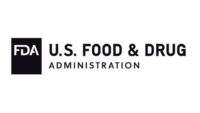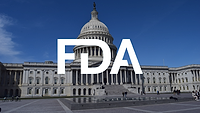FDA's Food Safety Program in FY 2002: Measuring Accomplishments

Each fiscal year, beginning in 1999, the U.S. Food and Drug Administration's (FDA) Center for Food Safety and Applied Nutrition (CFSAN), publishes a Program Priorities document, which publicly outlines the goals CFSAN intends to meet during the fiscal year. Individual goals are categorized as "A" list, "B*" list, or "B" list priorities, with "A" list items having the highest priority. The Program Priorities document becomes a measuring stick by which progress toward specific goals can be assessed, as well as a tool to help employees stay focused on the most important issues. CFSAN's goal: To accomplish at least 90% of the "A" list priorities.
When setting these goals, CFSAN solicits both internal and external input through an announcement in the Federal Register. In reviewing suggested priority items, CFSAN asks the question, "Where do we do the most good for the American consumer?" In answering this question, CFSAN initially set 92 A-list priorities in FY 2002, later expanding that number to 118.[1] Of all the areas addressed, food security was paramount. Traditional areas such as food safety, food additives, dietary supplements and food biotechnology also were represented, as were food allergens, transmissible spongiform encephalopathies, chemical contaminants, pesticides and other hazards. Importantly, CFSAN also had to execute a move to a new building in College Park, MD, with minimal impact on its regulatory responsibilities.
The 2002 fiscal year has ended and it is now time to stand next to the measuring stick and see what CFSAN accomplished. Of the 118 "A" list priorities, 112 were completed—a 95% success rate. While this article will not touch on every area addressed in the 2002 Program Priorities, it is intended to provide a sampling of CFSAN's accomplishments toward maintaining the safety and security of the U.S. food supply.
Food Security
In light of the terrorist attacks on Sept. 11, 2001, food security became the most prominent issue addressed by CFSAN in the past year. In meeting this challenge CFSAN identified short-, medium- and long-term activities intended to minimize terrorist threats and to maintain consumer confidence in the safety of the food supply. Activities outlined fall into one of three categories: anticipate, respond, or deter.
One key activity was the initiation of threat assessments to examine different categories of food for their relative risk to intentional contamination during various stages of food production and distribution. Although the full reports are classified so as not to provide a blueprint for terrorists, FDA is exploring ways to share with industry the information gleaned from these assessments. In January 2002, CFSAN published draft guidance for domestic producers and importers, addressing potential preventive measures firms can take to reduce the risk that food under their control will be subject to tampering, criminal or terrorist action. Firms are encouraged to use this guidenace to review their current food security procedures to determine where improvements can be made.[2]
While the guidance outlines steps industry can take to reduce the risk of intentional tampering, CFSAN has been working to strengthen the surveillance of imported foods. FDA's Office of Regulatory Affairs, in conjunction with CFSAN, has increased the number of physical import examinations by 183%, conducting more than 34,000 sample analyses on products with suspect histories. This far exceeded the agency's goal of increasing the number of physical examinations to 24,000 by the end of FY 2002. At the same time, FDA conducted more than 6,700 domestic inspections of firms producing "high risk" foods, surpassing our goal of 6,650 for this category. Similarly, 10,700 food samples were collected and analyzed for pesticides and environmental contaminants, outstripping our goal of 8,000. Recent increases in funding provided by Congress have enabled FDA to achieve these successes.
The Public Health Security and Bioterrorism Preparedness and Response Act of 2002, which was signed into law on June 12, contained a number of provisions related to food security. The new law strengthens oversight of imported food and facilitates FDA's ability to quickly conduct traceback investigations when illnesses associated with food are identified. As with other food related legislation, the law requires that FDA publish new regulations. In conjunction with FDA's Office of External Relations, CFSAN held six outreach meetings for stakeholders, explaining the new legislation and soliciting comments for the agency to consider prior to drafting the proposed regulations. We are now actively working on regulations addressing four provisions of the law: registration of food facilities; establishment and maintenance of records; prior notification of imported foods shipments; and administrative detention. Proposed rules addressing the registration of food facilities and prior notification of imported food shipments were published in early February. The other two proposed rules are scheduled to publish this spring. Following a public comment period for each proposed rule, FDA plans to issue final regulations on or before Dec. 12, 2003.[3]
Food Safety
Although food security efforts rec-eived the greatest visibility during the year, work on traditional food safety programs continued. In September 2002, FDA released the results of its second Seafood HACCP Evaluation, covering FY 2000 and FY 2001.[4] The evaluation of more than 4,200 seafood processors showed steady progress by the industry in implementing the full range of preventive controls that have become mandatory under the seafood Hazard Analysis & Critical Control Points (HACCP) program since 1997. The number of firms with no significant HACCP violations continues to increase, while the number of firms with HACCP violations warranting correction continues to decrease, indicating that firms are correcting their deficiencies voluntarily. Targeted inspections and education efforts aimed at improving lagging industry segments have been effective in some areas, but only partially successful in others. We continue to focus our efforts on those segments showing only partial success. Still, 85% of the firms evaluated were in compliance and the margin of safety associated with seafood continues to grow.
Also related to seafood, CFSAN held a food advisory committee meeting this past summer to determine the adequacy of the current consumer advisory that warns pregnant women and women of childbearing age who might become pregnant about the risks of methylmercury in fish. The panel reported that FDA was headed in the right direction, but that the agency could do more. In response to feedback from the advisory committee, FDA is working on improving its current advisory, including offering more specific advice on the consumption of tuna.
In 2002, CFSAN also published four guidance documents related to implementation of juice HACCP and the transportation of juice concentrates. These documents are intended to provide information to juice producers, assisting them in meeting the HACCP requirements outlined in the juice HACCP final rule.[5] In conjunction with these documents, CFSAN also published guidance for juice HACCP regulator training, outlining the tools necessary to conduct inspections of juice processing firms operating under HACCP. We also established a new compliance program focusing on juice HACCP. Under this program, 300 juice processors will undergo HACCP inspections in FY 2003.
Two items added to the Program Priorities document during the mid-year review addressed the presence of acrylamide and chloramphenicol in certain foods. To date, CFSAN is actively addressing both of these issues. In early 2002, the world learned that acrylamide, a potentially carcinogenic chemical with several industrial uses, also is present in certain foods. The formation of acrylamide appears to be a by-product of the cooking process and has likely been present for thousands of years; however, the risk posed to humans consuming acrylamide in food is unknown. In an effort to better understand the implications of acrylamide in the food supply FDA has taken a number of steps, including: developing an analytical method to measure acrylamide levels in food; initiating an evaluation of acrylamide formation during the cooking process; participating in the World Health Organization's special consultation on acrylamide; publishing a draft action plan for acrylamide in food; testing an array of foods for acrylamide; holding a public meeting on the subject; and convening a food advisory committee meeting on the topic.
CFSAN began to address the presence of chloramphenicol in some imported shrimp and honey. Chloramphenicol, a broad-spectrum antibiotic, is prohibited from use in food-producing animals and animal feed products. In responding to this issue, FDA collected and analyzed samples of shrimp and crayfish for chloramphenicol; refined the method used to detect chloramphenicol levels in shrimp and crayfish from 5 ppb to 1 ppb; met with Chinese officials to discuss concerns regarding chloramphenicol contaminated honey imported from China; issued an import alert restricting entry of chloramphenicol-contaminated honey into the U.S.; in conjunction with the U.S. Customs Service, uncovered a dumping scheme involving contaminated honey imports from China; and issued an import alert authorizing detention without physical examination of aquaculture seafood products due to unapproved drugs.
While most foods are safe for all people, some foods do cause allergic reactions in certain people. The eight most common food allergens--milk, fish, peanuts, tree nuts, eggs, wheat, soybean and crustacea (lobster, shrimp, crab)--account for 90% of food-related allergic reactions. It is FDA's position that a product containing any of these allergens must list that allergen as an ingredient on the packaging. Unfortunately, over the past several years there has been an increase in the number of food recalls due to undeclared allergens. As part of an effort to protect consumers from unintentional exposure to food allergens FDA submitted a report to Congress on its plans to prevent cross-contamination of foods by undeclared allergens; participated in more than 20 industry, consumer and regulatory conferences, continuing outreach and awareness training regarding the presence of allergens in foods; and conducted more than 1,800 inspections of food processing plants to determine how allergens are stored and handled by processors. Additionally, training was provided to all FDA and state regulators responsible for conducting food inspections in the U.S. The objectives of this training included providing a review of FDA's policy on food allergens; presenting information on potential sources of allergen cross-contamination; and informing investigators about methods to assist them in performing effective and uniform allergen inspections.
Undeclared allergens are not the only source of adverse events related to foods. Tens of thousands of food, supplement, and cosmetic products are available in the U.S., and approximately 7,000 adverse events allegedly related to these products are reported to FDA each year. Historically, FDA has maintained three separate databases to track reports of adverse events, one for cosmetics, one for dietary supplements, and one for foods. These databases are now outdated and are in the process of being replaced with a single system known as the CFSAN Adverse Event Reporting System (CAERS). CAERS will allow better tracking of adverse events and contain more detailed product information than the previous systems. In addition, CAERS will enable improved data analysis and will provide information that can be used in developing an early warning capability for foodborne illnesses and adverse events. CFSAN began designing CAERS in December 2000 and is now pilot testing portions of the system. Barring any unforeseen circumstances, the system should be fully operational in June 2003.
Additionally, CFSAN has updated the way it handles adverse event reports. When the center receives an adverse event report allegedly associated with a product, a letter is sent to the product manufacturer notifying them of the report and encouraging them to share any information that is relevant and useful concerning that particular adverse event or others they may be aware of involving their product.[6]
Dietary Supplements
FDA regulations for the conventional food supply are outlined in the Federal Food Drug and Cosmetic Act. The Dietary Supplement Health and Education Act (DSHEA) amended that act, providing the framework for regulating supplements. Under DSHEA, the dietary supplement manufacturer is responsible for ensuring that the supplement is safe before it is marketed. FDA is responsible for taking action against unsafe dietary supplement products after they reach the market. As part of meeting its responsibility to regulate supplements on a post-market basis, CFSAN developed a Dietary Supplement Strategic Plan in January 2000. Meeting the requirements of the Rural Development, Food and Drug Administration, and Related Agencies 2001 Appropriations Bill, CFSAN submitted a report to Congress in May, which estimated the cost to implement the plan at $40-65 million. CFSAN's dietary supplement related activities go beyond those targeted toward industry. To assist consumers in making informed decisions and evaluating information about dietary supplements, CFSAN developed "Tips for the Savvy Supplement User," available in both English and Spanish.[7] CFSAN also issued a consumer advisory and a letter to health care professionals on the potential risk of severe liver injury associated with the use of dietary supplements containing kava.
On the Move: At Home and Abroad
While pursuing its FY 2002 program goals, CFSAN was simultaneously moving its headquarters form downtown Washington, DC, to the Harvey W. Wiley Building in College Park, MD. In a span of seven months, CFSAN relocated approximately 600 of its more than 900 employees to the new building, named in honor of the first FDA Commissioner. By the end of 2002, the Outreach and Information Center, which operates a consumer hotline (1-888-SAFEFOOD) was relocated, as well. When the move was originally planned during the 1990s, CFSAN was a much smaller organization. Since then, thanks to increased funding from Congress, the number of staff has increased considerably, further strengthening our food protection abilities. As a result of this growth, additional building space was required. FDA, through the Government Services Administration, now has contracted construction of a second CFSAN building on the land adjacent to the Wiley Building. Once completed, CFSAN employees from the Office of Food Additive Safety and the Office of Cosmetics and Colors who remain in downtown Washington, DC, will relocate to College Park.
With the globalization of economies an increasing number of companies conduct business internationally, and the conventional food, cosmetic and dietary supplement industries are no exception. In the last 10 years, the number of line item imports for products that CFSAN regulates has nearly quadrupled, and FDA participation in the Codex Alimentarius Commission (CAC) is of increasing importance. Created in 1963, the CAC provides a forum in which member countries and international organizations can exchange information and ideas about food safety and trade issues, elaborating on food standards, which can be used by countries to facilitate trade. CFSAN plays a leadership role in this arena, providing the U.S. delegate to several major Codex committees, ad hoc task forces, and related drafting and working groups.[8]
An example of our participation was leading the U.S. delegation to the Codex Ad-Hoc Intergovernmental Task Force on Foods Derived Through Biotechnology meeting in March 2002. As a result of the U.S. delegation's efforts, the task force completed work on two major documents, the Draft Principles for the Risk Analysis of Foods Derived from Modern Biotechnology and the Draft Guidelines for the Conduct of Food Safety Assessment of Foods Derived from Recombinant-DNA Plants. Key aspects of these task force accomplishments included identifying a solution for two important issues: handling product tracing and constructing an annex on assessing allergenicity of foods derived from biotechnology.
In summary, CFSAN had another successful year exceeding its target completion rate for program priorities. Of the six "A" list items carried over from last year, three were completed by the end of December 2002. Work on the remaining three--publication of a proposed egg safety rule for farm and retail; development and implementation of an allergen enforcement strategy for cross-contamination; and publication of a proposed rule for dietary supplement Good Manufacturing Practices (GMPs) and conducting related outreach--continues. By publishing our program priorities each year, CFSAN hopes to continue the tradition of building predictability, transparency and accountability into FDA's foods program, as we seek to ensure the safety and security of our nation's food supply.
Sebastian Cianci is a policy analyst for CFSAN and a member of the Center's Executive Operations Staff, located in College Park, MD. He has worked for FDA for 12 years and currently serves as CFSAN's Trade Press Liaison. CFSAN established a Trade Press Office with the purpose of facilitating communication with publications reporting on conventional foods, dietary supplements and cosmetics.
Internet References
1. Current and past CFSAN Program Priority documents can be found at www.cfsan.fda.gov/~dms/cfsan3.html.
2. Copies of the guidance can be found on CFSAN's website at www.cfsan.fda.gov/~dms/fsterr.html.
3. Additional information concerning future public meetings on the implementation of the new laws is available at www.fda.gov/oc/bioterrorism/bioact.html.
4. FDA's Evaluation of the Seafood HACCP Program for Fiscal Years 2000/2001 can be viewed at www.cfsan.fda.gov/~comm/seaeval2.html.
5. Juice HACCP guidance can be viewed at www.cfsan.fda.gov/~comm/haccpjui.html.
6. For detailed information on adverse event reports, please see www.cfsan.fda.gov/~dms/ds-rept.html.
7. "Tips for the Savvy Supplement User" is available in English at www.cfsan.fda.gov/~dms/ds-savvy.html, or in Spanish at www.cfsan.fda.gov/~dms/sds-savvy.html.
8. A complete summary of FDA's Foods and Veterinary Medicine Codex activities can be found online at www.cfsan.fda.gov/~cjm/codex.html.
Looking for a reprint of this article?
From high-res PDFs to custom plaques, order your copy today!








